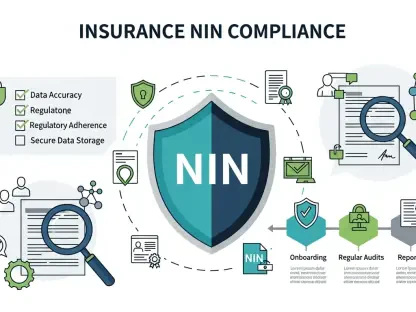Meet Simon Glairy, a seasoned expert in insurance and Insurtech, with a sharp focus on risk management and AI-driven risk assessment. With years of experience navigating complex challenges in high-stakes industries like aviation, Simon offers invaluable insights into the recent US government shutdown’s impact on airline operations and the potential surge in workers’ compensation claims. In this interview, we dive into the operational chaos faced by aviation workers, the specific risks and injuries they encounter, the mental health challenges from passenger interactions, and what employers and insurers can do to mitigate these issues. Join us as we explore how this turbulent period could reshape workplace safety in the skies.
How did the recent US government shutdown impact airline operations across the country?
The shutdown, which lasted over a month, created absolute chaos for the aviation industry. With the FAA cutting air-traffic capacity by up to 10% at major airports, we saw massive delays and cancellations—over 3.2 million travelers were affected by early November. Staffing shortages, especially among air traffic controllers, meant that airlines had to juggle schedules and resources under extreme pressure. It wasn’t just about fewer flights; it was about an entire system stretched to its breaking point, impacting everyone from pilots to ground crew.
What were some of the toughest challenges aviation workers faced during this period?
Workers were dealing with incredibly long hours due to delays and reassignments, which led to fatigue piling up fast. Flight crews and ground staff often had to manage frustrated passengers on top of their already demanding roles. There was also the uncertainty—no one knew how long the shutdown would last, which added a layer of stress. Physically, the workload intensified as staff shortages meant fewer hands to manage the same, if not greater, volume of tasks.
What factors are raising concerns about a potential spike in workers’ compensation claims following the shutdown?
The biggest driver is the combination of extended hours and operational disruptions. When workers are pushed beyond their usual limits, mistakes happen, and injuries follow. Fatigue can lead to lapses in focus, increasing the risk of physical harm. Plus, the emotional toll of dealing with upset passengers and unpredictable schedules can trigger stress-related claims. Insurers are bracing for a wave of both physical and mental health claims because this kind of high-pressure environment amplifies every existing risk.
Can you describe the kinds of injuries flight crews often face due to turbulence, and how common these are?
Turbulence injuries usually happen to flight attendants who aren’t buckled in during sudden jolts. We’re talking about sprains, bruises, or even fractures from being thrown against seats or walls. They’re not rare—turbulence is unpredictable, and while not every incident is severe, the cumulative effect of minor injuries can be debilitating over time. Serious cases, though less frequent, can sideline crew members for weeks or months, especially if it’s a back or neck injury.
Why are drink carts such a significant hazard for flight attendants on the job?
Drink carts are deceptively dangerous because they’re heavy and cumbersome, especially in tight airplane aisles. Pushing or pulling them can strain shoulders and backs if not done properly, and a sudden stop or turn can cause a worker to twist awkwardly. Combine that with turbulence or rushed service during short flights, and you’ve got a recipe for injury. It’s a mundane piece of equipment, but it’s one of the leading causes of physical claims among cabin crew.
How serious is the issue of stress and mental health claims for aviation workers, especially with passenger interactions?
It’s a growing problem, particularly since travel disruptions have become more common. Workers are on the front lines dealing with frustrated or even aggressive passengers, which can take a huge emotional toll. Verbal abuse is bad enough, but physical altercations, though less common, do happen and can lead to both mental and physical claims. Stress claims are harder to quantify, but they’re becoming more recognized as a legitimate workplace issue in this industry.
What makes the work of ground crew so physically demanding, and how does this contribute to injuries like sprains and strains?
Ground crew jobs are grueling because they involve heavy lifting—think baggage, cargo, and equipment—often under tight deadlines. They’re constantly bending, twisting, and carrying loads in all kinds of weather, which puts a lot of strain on muscles and joints. During busy periods, the pace ramps up, and there’s little time for proper rest or recovery, so sprains and strains become almost inevitable for some workers.
What can airlines and employers do to better protect their staff from the physical and mental risks we’ve discussed?
Prevention starts with better training—teaching safe lifting techniques, proper cart handling, and even de-escalation tactics for passenger conflicts. Equipment redesign, like lighter carts or ergonomic tools for ground crew, could make a big difference. Scheduling also needs attention; managing fatigue through reasonable duty hours and rest breaks is critical. On the mental health side, offering counseling or support programs can help workers cope with stress and aggression. It’s about creating a culture that prioritizes safety over speed.
Looking ahead, what is your forecast for workers’ compensation trends in the aviation industry after this shutdown?
I think we’re likely to see a noticeable uptick in claims over the next few months as the fallout from the shutdown becomes clearer. Physical injuries from overwork and stress-related claims from operational chaos could both spike, especially if workers were pushed beyond their limits. The bigger question is whether airlines and insurers will use this as a wake-up call to invest in better safety measures and fatigue management. If not, we might see these trends persist or worsen during future disruptions.









